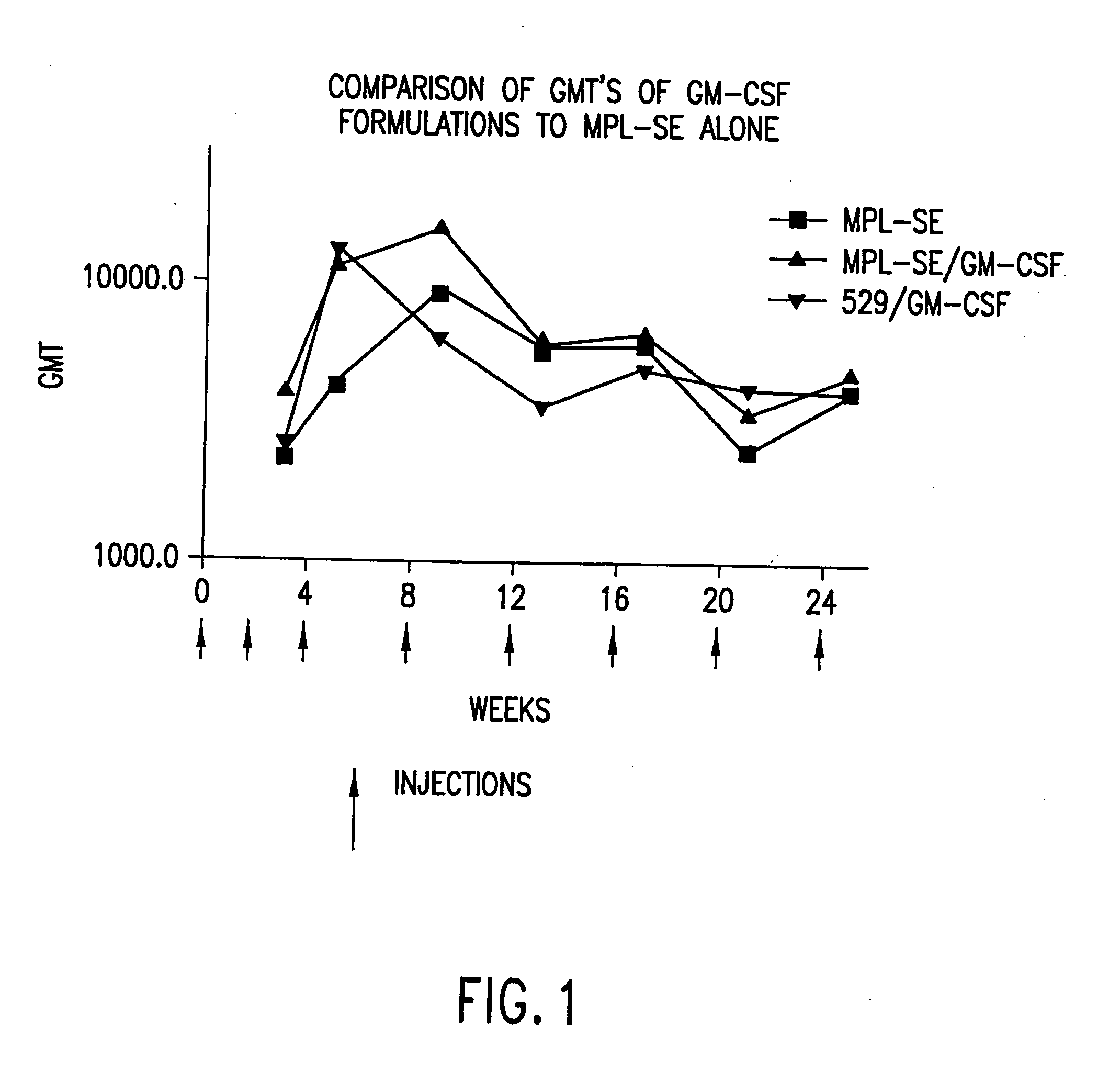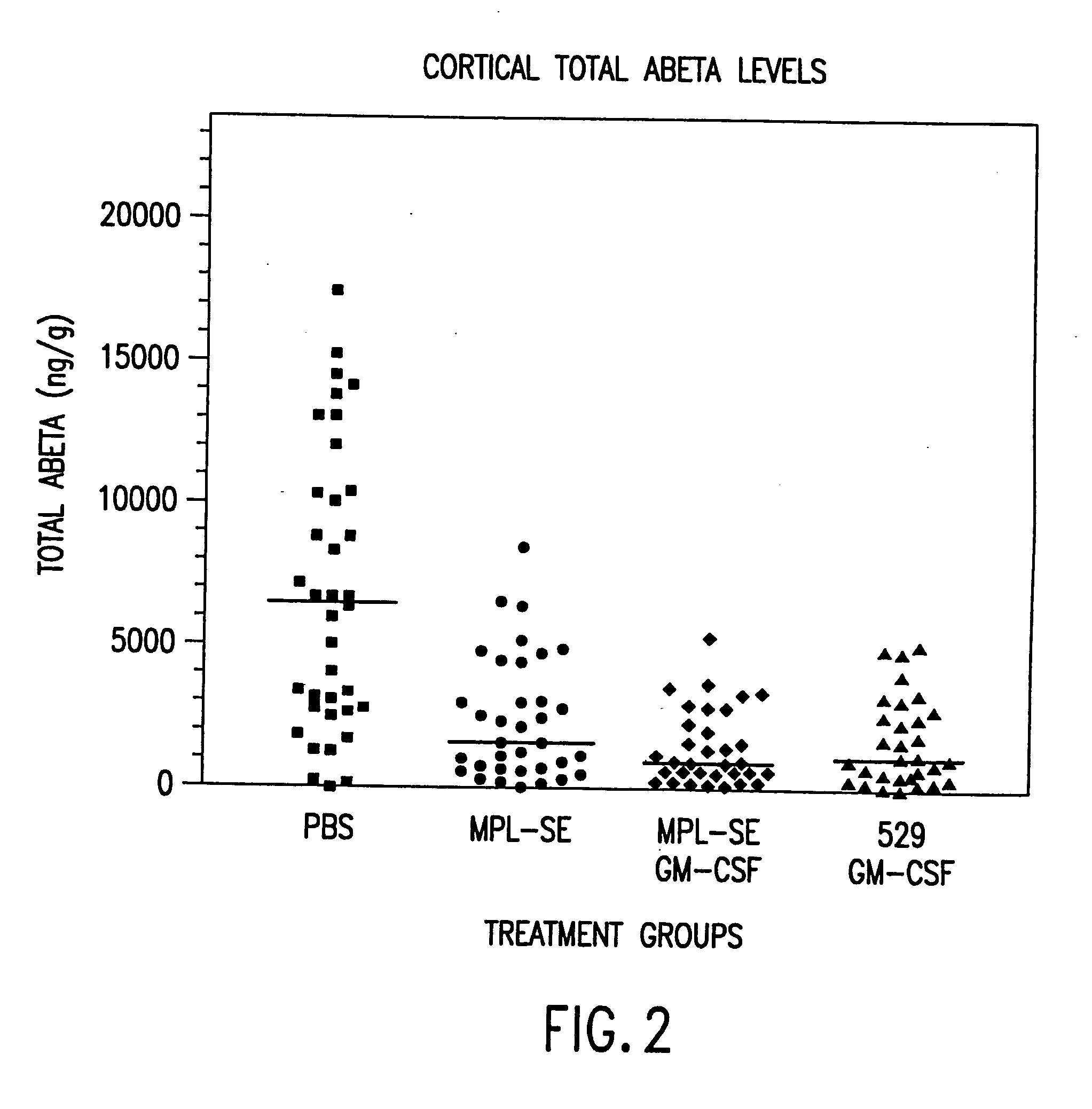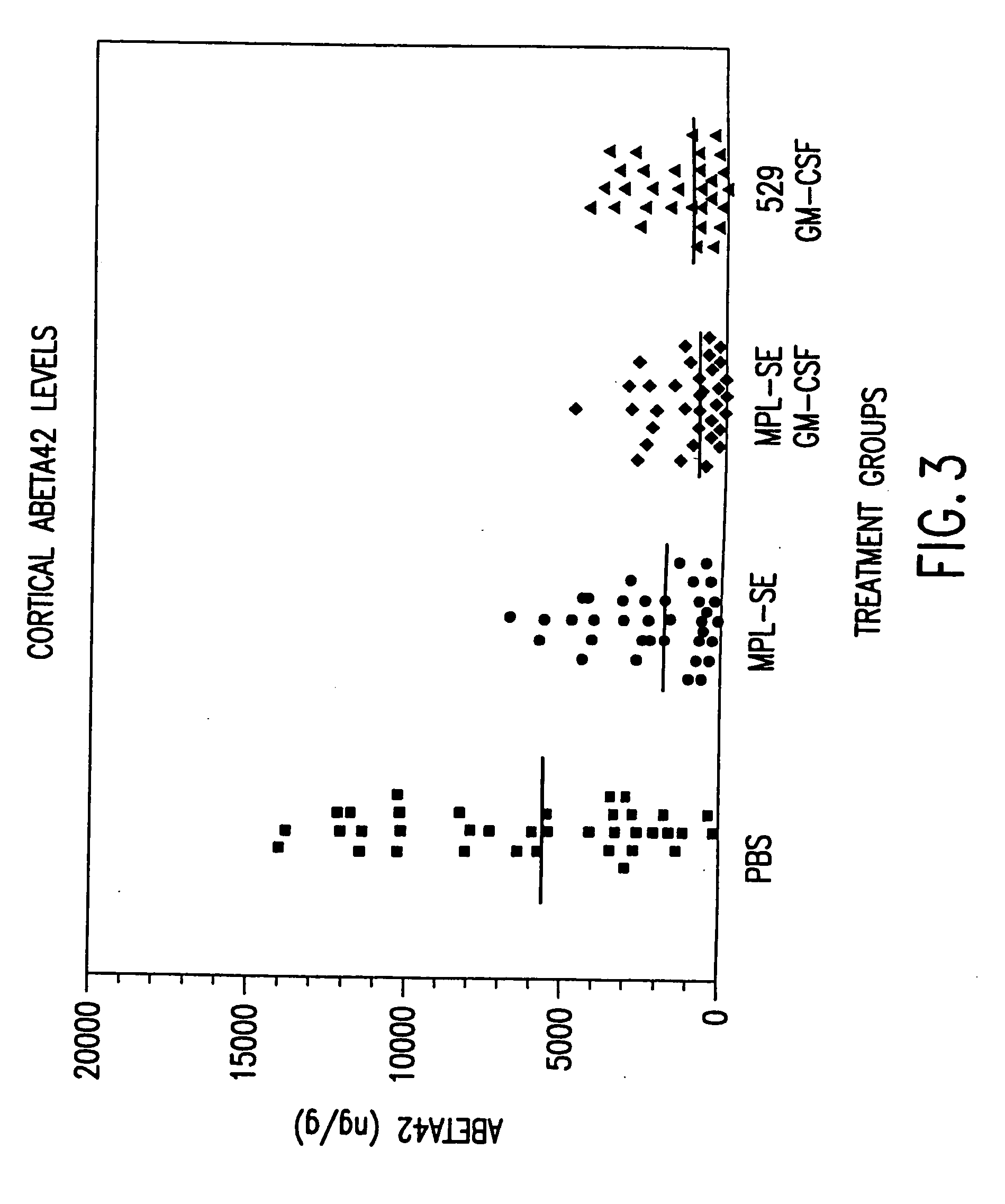Adjuvant combination formulations
- Summary
- Abstract
- Description
- Claims
- Application Information
AI Technical Summary
Benefits of technology
Problems solved by technology
Method used
Image
Examples
example 1
Materials and Methods
[0088] The following materials and methods were utilized in the experiments reported in Examples 2-7 below.
Animals
[0089] Female Balb / c mice, aged 7-9 weeks, were purchased from Taconic Farms, Inc. (Germantown, N.Y.). Female Swiss-Webster mice, aged 7-9 weeks, were also purchased from Taconic Farms, Inc. All mice were housed in a facility approved by the American Association for Accreditation of Laboratory Animal Care. Mice were acclimatized to the housing facility for one week prior to initiation of studies.
Antigens
[0090] In the HIV experiments of Examples 2-3 below, two different synthetic peptides were used. The sequence of the multiepitope HIV-1-MN peptide T1SP10MN(A)(−Cys) (also referred to herein as MN-10) is as follows:
(SEQ ID NO:2)Lys Gln Ile Ile Asn Met Trp Gln Glu Val Gly LysAla Met Tyr Ala Thr Arg Pro Asn Tyr Asn Lys ArgLys Arg Ile His Ile Gly Pro Gly Arg Ala Phe TyrThr Thr Lys.
[0091] This peptide has been previously described (33,34), and con...
example 2
Reciprocal anti-T1SP10MN(A)(−Cys)
IgG Endpoint Total and Subclass Titers
[0099] Reciprocal endpoint IgG subclass titers were measured from pooled serum (n=5 Balb / c) five weeks after initial immunization, two weeks after secondary immunization. Mice were immunized subcutaneously in the rump with 25 μg of T1SP10MN(A)(−Cys), with a total of 0.2 ml divided equally into two 0.1 ml injections on each side, at week 0 and week 3. 529 SE was diluted to create an emulsion containing 1.25% squalene oil and 25 μg 529 per dose. SE is an oil-in-water emulsion vehicle consisting of squalene, glycerol, and an emulsifying agent. Recombinant murine IL-12 was delivered at 40 ng / mouse. Recombinant murine GM-CSF was delivered at 25 μg / mouse. The results are given in Table 1, with the geometric mean titers plus standard errors for each group.
TABLE 1Reciprocal anti-T1SP10MN(A)(-Cys)IgG endpoint total and subclass titersμg HIVEndpoint TitersAdjuvantspeptideIgGIgG1IgG2a529 (25) SE (1.25%25206,301 + / − 175,...
example 3
CTL Analysis in Balb / c Mice
[0100] The protocols of Example 2 were followed regarding immunization of mice. The CTL activity of spleen cells isolated from mice 14 days after secondary immunization was assessed. 529 SE was formulated with 25 μg 529 SE containing 1.25% oil, with or without 10 μg GM-CSF or 40 ng IL-12, plus 25 μg T1SP10MN(A)(−Cys).
[0101] For CTL analysis, spleen cells were removed from immunized mice 14 days after secondary immunization. A protocol previously described (39) was essentially followed. Briefly, erythrocyte-depleted spleen cells from three mice per group were pooled. Spleen effector cells (4×106 / ml) were restimulated in 24 well culture plates in a volume of 1.5-2 ml for seven days with 1 μg / ml of either the “MN-10” peptide, the “IIIB” 10mer CTL epitope peptide, or no HIV peptide. Both CTL epitopes were restricted to H-2Dd. Cultures were supplemented with 10 U / ml recombinant murine IL-2 (Biosource) for the last five days of culture. For analysis of cytotox...
PUM
| Property | Measurement | Unit |
|---|---|---|
| Volume | aaaaa | aaaaa |
| Volume | aaaaa | aaaaa |
| Volume | aaaaa | aaaaa |
Abstract
Description
Claims
Application Information
 Login to View More
Login to View More - R&D
- Intellectual Property
- Life Sciences
- Materials
- Tech Scout
- Unparalleled Data Quality
- Higher Quality Content
- 60% Fewer Hallucinations
Browse by: Latest US Patents, China's latest patents, Technical Efficacy Thesaurus, Application Domain, Technology Topic, Popular Technical Reports.
© 2025 PatSnap. All rights reserved.Legal|Privacy policy|Modern Slavery Act Transparency Statement|Sitemap|About US| Contact US: help@patsnap.com



